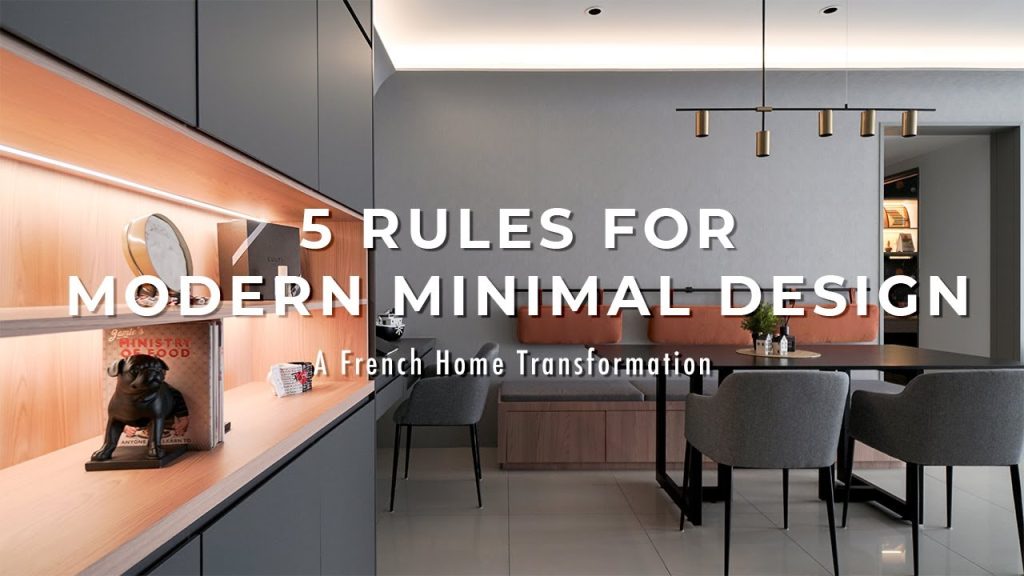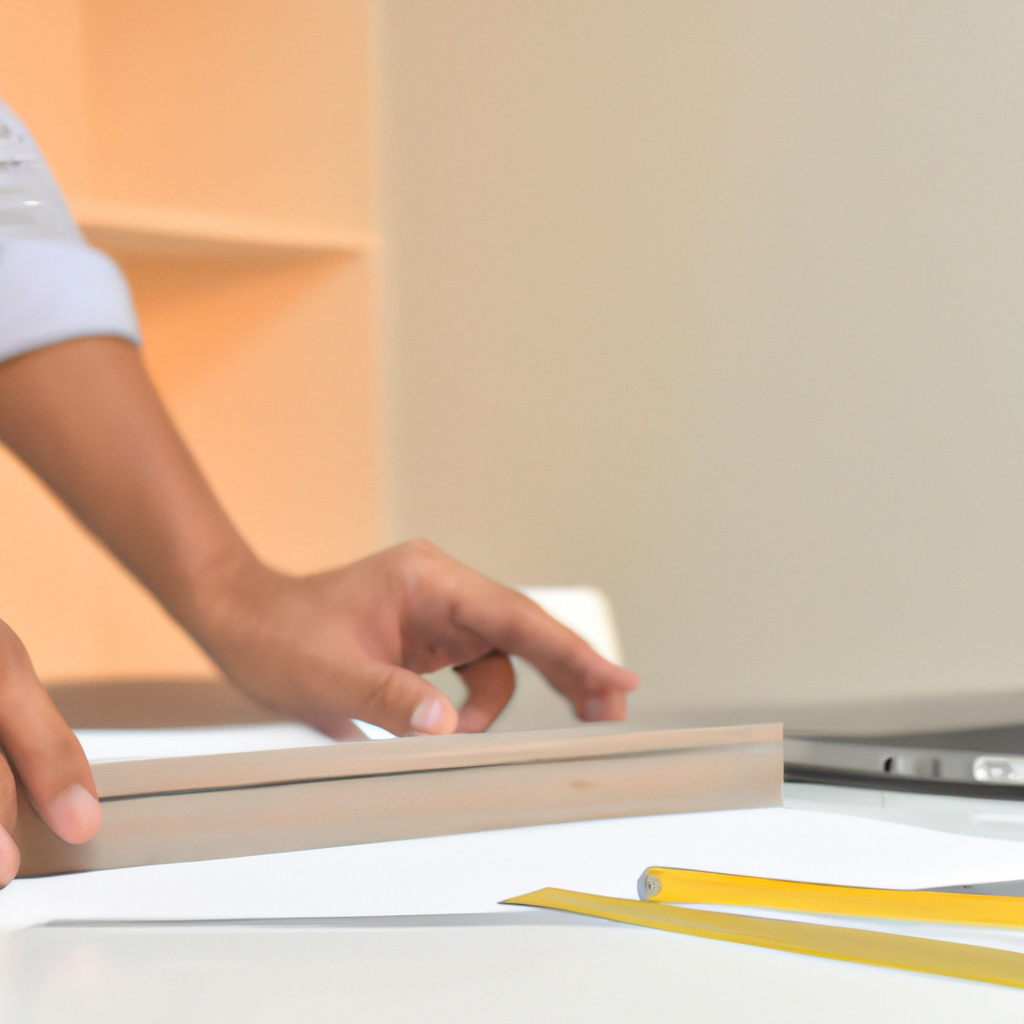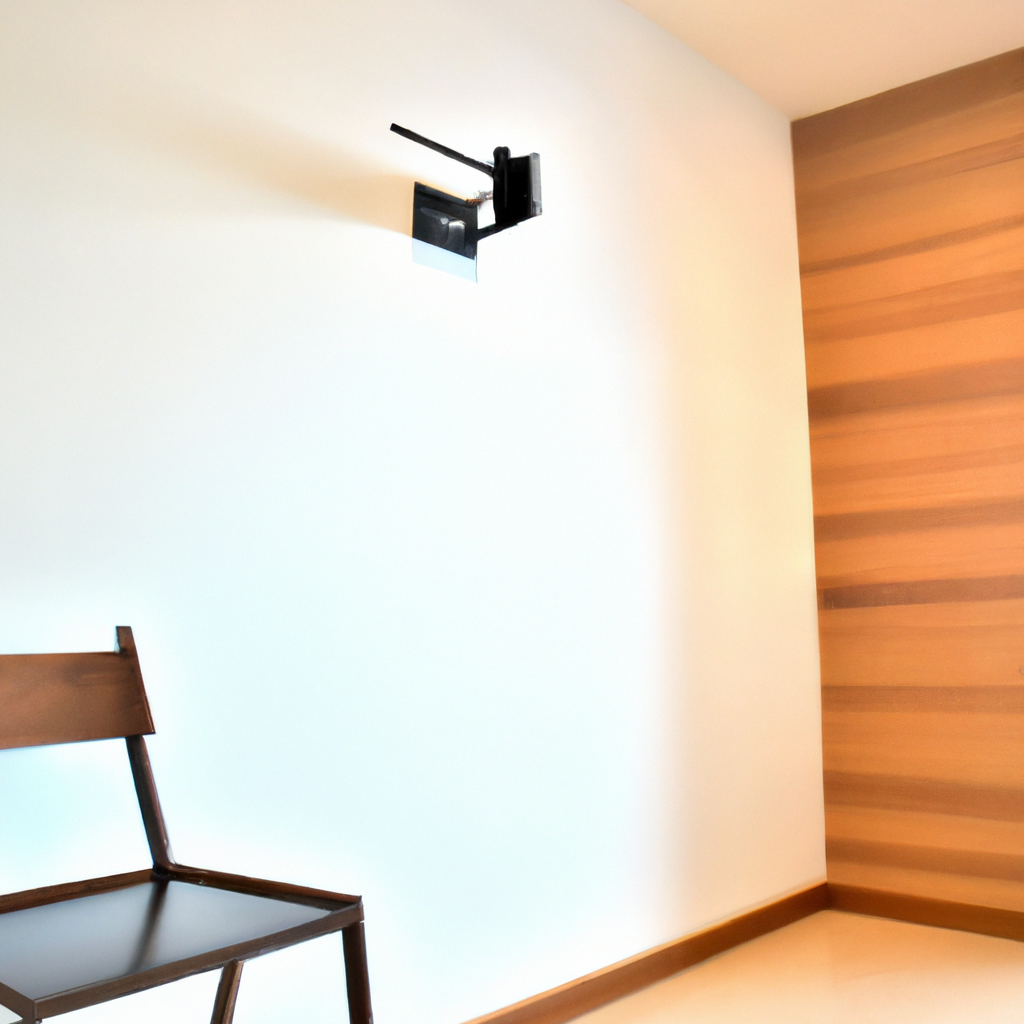
Welcome to DESIGN SEED! In today’s episode, we will be sharing a story of a French client who is currently residing in Kuala Lumpur, and we have had the opportunity to design and renovate his property twice in the past 10 years. The focus of the transformation was creating a modern and minimal space in a condominium. Throughout the project, we aimed to optimize the living area, enhance natural lighting, and incorporate functional elements that would meet the client’s needs. We will also be sharing five key tips for achieving a minimal space design. So, sit back, relax, and join us on this inspiring home transformation journey!
Living in high-rise apartments is not as common in Europe as it is in Malaysia, where various types of condominiums are rapidly emerging. In Europe, living in cities or rural areas can be quite expensive, so you either have traditional houses or apartments. The concept of condominiums is relatively new in Europe. Today, Design Seed will not only share the story of our client’s apartment, but also discuss the five key principles of minimal design. We believe that choosing slender and space-saving furniture, maintaining a neutral color palette, avoiding wall partitions, using vibrant colors for visual expansion, and optimizing storage space are essential aspects to consider when embracing minimalism. Let’s delve into the world of modern minimalism and discover how it can transform your living space into a serene oasis.
Table of Contents
Designing the Dining Area
Creating a custom dining area
When designing a dining area in a small space, it is important to create a custom layout that maximizes functionality and optimizes space. One way to do this is by utilizing built-in furniture and storage solutions that are tailored to fit the dimensions of the room. This can include built-in benches and tables that are attached to the walls or fitted into alcoves. By customizing the dining area, you can make the most of the available space and create a seamless flow between the dining area and the rest of the apartment.
Maximizing space with built-in storage
In a small dining area, storage can often be an issue. However, by incorporating built-in storage solutions, you can maximize the space and keep the area clutter-free. This can include built-in shelves, cabinets, and drawers that are seamlessly integrated into the walls or under seating areas. These storage solutions not only provide a place to store dining essentials such as dishes, glassware, and linens, but they also help to keep the dining area organized and visually appealing.
Adding decorative elements
While functionality is important in a dining area, it is also essential to create a space that is aesthetically pleasing and inviting. One way to do this is by adding decorative elements that complement the overall design of the apartment. This can include artwork, plants, or decorative accents such as vases or candles. By incorporating these elements, you can create a warm and inviting atmosphere in the dining area that is conducive to conversation and enjoyment.
Transforming the Dry Kitchen Area
Converting a dull bar area into a modern breakfast counter
In many apartments, the dry kitchen area is often underutilized or lacks personality. However, by transforming a dull bar area into a modern breakfast counter, you can create a functional and visually appealing space. This can include installing a countertop with seating, adding sleek and modern appliances, and incorporating storage solutions for kitchen essentials. By creating a breakfast counter, you can transform the dry kitchen area into a multi-functional space that can be used for cooking, dining, and entertaining.
Connecting the kitchen with the rest of the apartment
One challenge in many apartments is the lack of connectivity between the kitchen and the rest of the living spaces. However, by redesigning the layout and incorporating open-concept design principles, you can create a seamless flow between the kitchen and the rest of the apartment. This can include removing walls or partitions to create an open and spacious kitchen, incorporating a kitchen island or peninsula that acts as a transition between the kitchen and the dining or living areas, and utilizing cohesive design elements and materials throughout the space.
Enhancing the functionality of the workspace
For those who work from home or require a functional workspace within their apartment, it is important to optimize the design of the dry kitchen area to enhance its functionality. This can include incorporating a designated workspace with a desk, storage solutions for office supplies, and adequate lighting to create a productive and comfortable environment. By carefully considering the needs of the individual and customizing the workspace, you can create a functional and efficient area within the dry kitchen that meets all the necessary requirements.
Creating a Family-friendly Study

Designing a multifunctional office space
When creating a family-friendly study, it is important to design a space that can accommodate the needs of multiple individuals. This can include incorporating multiple workstations with ample storage and desk space, integrating technology such as printers and scanners, and providing comfortable seating options for extended periods of work. By designing a multifunctional office space, you can create an environment that is conducive to productivity and collaboration.
Incorporating a shared gaming area
In addition to providing a workspace, it is also important to incorporate recreational elements into the family-friendly study. This can include creating a shared gaming area with gaming consoles, comfortable seating, and storage solutions for game accessories. By including a gaming area, you can create a space that is not only functional but also enjoyable for the entire family.
Providing a personal workspace within the apartment
While it is important to create shared spaces within the apartment, it is also crucial to provide areas for individual privacy and productivity. This can include designing personal workspaces or study nooks that are separate from the main living areas. These private workspaces can include desks, storage solutions, and adequate lighting to create an environment that is conducive to focus and concentration.
Expanding the Living Area
Meeting the client’s request for a larger living space
In many apartments, the living area can be limited in size, making it difficult to create a comfortable and spacious environment. However, by employing smart design techniques and utilizing the space effectively, it is possible to meet the client’s request for a larger living space. This can include reconfiguring the layout to maximize space, incorporating multifunctional furniture that can be easily rearranged, and utilizing mirrors and light colors to create the illusion of a larger space.
Creating a second-level family area
One way to expand the living area is by creating a second-level family area. This can be accomplished by building a mezzanine or loft space that overlooks the main living area. This additional space can be used as a relaxation area, a playroom for children, or even a home theater. By creating a second-level family area, you can add valuable square footage to the living space without sacrificing functionality or style.
Enhancing the acoustics of the workspace
In any living area, it is important to consider the acoustics of the space to create a comfortable and enjoyable environment. This is especially crucial in a multifunctional space where different activities may be taking place simultaneously. By incorporating acoustic panels or materials, utilizing plush furniture and textiles, and strategically placing soundproofing elements, you can create a living area that is both visually stunning and acoustically balanced.
Utilizing Natural Light and Soft Lighting

Optimizing natural light with sheer curtains
One of the key elements of minimalist design is the use of natural light to create a bright and airy atmosphere. In order to maximize natural light in the apartment, it is important to utilize sheer curtains or blinds that allow sunlight to filter into the space while still maintaining privacy. By using sheer curtains, you can create a soft and diffused lighting effect that enhances the overall aesthetic of the apartment.
Creating a soft and cozy atmosphere with subtle lighting
In addition to natural light, it is also important to create a cozy and inviting atmosphere in the apartment with the use of subtle lighting. This can include strategically placed floor lamps, table lamps, and wall sconces that provide soft and warm lighting. By incorporating these lighting elements, you can create a relaxing and comfortable environment that is perfect for unwinding after a long day.
Balancing privacy with ample lighting
While it is important to optimize natural light and create a cozy atmosphere, it is also crucial to balance privacy with ample lighting. This can be achieved by incorporating adjustable blinds or curtains that provide privacy when needed, while still allowing natural light to filter into the apartment. Additionally, it is important to strategically place lighting fixtures to ensure that essential areas of the apartment, such as workspaces or dining areas, are well-lit and functional.
Designing a Striking Feature Wall
Incorporating a curved feature wall
One way to create a striking and visually interesting feature in the apartment is by incorporating a curved feature wall. This can be achieved through the use of curved architectural elements, such as rounded corners or arched doorways. By incorporating a curved feature wall, you can add depth and dimension to the apartment while creating a focal point that draws attention and adds a touch of elegance to the space.
Using clean lines and monochromatic tones
One of the core principles of minimalist design is the use of clean lines and a monochromatic color palette. When designing a striking feature wall, it is important to incorporate these elements to create a cohesive and visually stunning design. This can include utilizing geometric patterns, incorporating contrasting textures, and choosing a color palette that complements the overall design of the apartment.
Creating a comfortable and inviting ambiance
While creating a visually striking feature wall is important, it is equally crucial to create a comfortable and inviting ambiance in the apartment. This can be achieved by incorporating plush and comfortable furniture, using soft and warm lighting, and incorporating cozy textiles such as rugs or curtains. By creating a comfortable and inviting atmosphere, you can ensure that the feature wall not only looks visually stunning but also enhances the overall comfort and functionality of the space.
Designing a Minimalist Bedroom

Choosing a tatami-style bed for a spacious impression
When designing a minimalist bedroom, it is important to choose furniture that creates a spacious impression. One way to achieve this is by choosing a tatami-style bed, which is typically a low platform bed that is close to the floor. This type of bed design helps to create a sense of openness and simplicity in the room. Additionally, by selecting a bed with built-in storage, you can maximize the use of space and keep the bedroom clutter-free.
Saving space with a customized headboard
In a minimalist bedroom, it is important to maximize the use of space while maintaining a clean and streamlined design. One way to achieve this is by opting for a customized headboard that serves multiple functions. This can include incorporating built-in shelves or storage compartments into the headboard design, providing a space-saving solution for displaying decor or storing essentials. By utilizing a customized headboard, you can maximize the functionality of the bedroom while keeping the design minimal and sleek.
Maximizing natural light and maintaining privacy
Natural light is an essential element in any minimalist design, especially in a bedroom where a tranquil and serene atmosphere is desired. When designing a minimalist bedroom, it is important to maximize natural light while still maintaining privacy. This can be achieved by using sheer curtains or blinds that allow light to filter into the room while still providing a level of privacy. Additionally, by utilizing light-colored and reflective surfaces, you can enhance the brightness and openness of the space.
Adding Functional Elements to the Corridor
Creating a focal point at the end of the corridor
In many apartments, the corridor can often be overlooked or treated as a transitional space. However, by creating a focal point at the end of the corridor, you can transform it into a functional and visually appealing area. This can include incorporating artwork, a statement light fixture, or a decorative accent piece that draws the eye and adds interest to the space.
Designing a vanity area near the bedroom
For added convenience and functionality, it can be beneficial to design a vanity area near the bedroom within the corridor. This can include incorporating a built-in vanity table, a mirror, and storage solutions for beauty and grooming products. By designing a vanity area within the corridor, you can create a dedicated space for personal care routines while optimizing the use of available space.
Optimizing storage and display space
Corridors are often underutilized spaces when it comes to storage and display. However, by incorporating smart storage solutions and display shelves or niches, you can optimize the use of the corridor space. This can include incorporating built-in cabinets or shelves for storing shoes, coats, or other essentials, as well as creating display areas for artwork, photographs, or collectibles. By maximizing storage and display space within the corridor, you can create a functional and visually appealing area that adds value to the overall design of the apartment.
Exploring the Core Principles of Minimalist Design
Emphasizing the importance of size and space
One of the core principles of minimalist design is emphasizing the importance of size and space. In a minimalist apartment, it is important to carefully consider the dimensions of each room and the overall layout to ensure an open and spacious feel. By opting for sleek and minimalist furniture designs and avoiding clutter, you can create a sense of openness and allow the space to breathe.
Maintaining a cohesive color palette
Another key principle of minimalist design is maintaining a cohesive color palette throughout the apartment. This can include opting for neutral tones such as whites, grays, or earthy colors that provide a timeless and elegant aesthetic. By maintaining a cohesive color palette, you can create a harmonious and visually appealing environment that is conducive to relaxation and tranquility.
Promoting open floor plans and multifunctional spaces
In a minimalist apartment, it is important to promote open floor plans and create multifunctional spaces that serve multiple purposes. This can include removing walls or partitions to create a seamless flow between different living areas, incorporating furniture that can be easily rearranged or transformed to accommodate different activities, and utilizing smart storage solutions to maximize the use of space. By promoting open floor plans and multifunctional spaces, you can create an environment that is adaptable and suits the needs of the individual or family.
Maximizing Storage in a Minimalist Home
Organizing belongings for a clutter-free environment
One of the key principles of minimalist design is to eliminate clutter and create a clean and organized environment. In a minimalist home, it is important to carefully assess and organize belongings to ensure that only essential items are kept. This can include decluttering and purging unnecessary items, organizing belongings into categories, and utilizing storage solutions such as bins, baskets, or drawer dividers to keep everything in its proper place.
Utilizing smart storage solutions
In a minimalist home, it is important to maximize storage space and utilize smart storage solutions to keep essential items within reach and maintain a clutter-free environment. This can include incorporating built-in storage solutions such as cabinets or shelves, utilizing vertical space with wall-mounted storage units or hooks, and opting for furniture with hidden storage compartments. By utilizing smart storage solutions, you can optimize the use of space and create a functional and organized living environment.
Keeping essential items within reach
In a minimalist home, it is important to keep essential items within reach to create a streamlined and efficient living environment. This can include organizing frequently used items in easy-to-access locations, utilizing storage solutions near entryways for items such as keys or wallets, and designating specific areas for frequently used items such as cooking utensils or cleaning supplies. By keeping essential items within reach, you can simplify daily routines and create a stress-free living environment.
In conclusion, designing a minimalist apartment requires careful consideration of size, space, and functionality. By customizing the dining area, transforming the dry kitchen area, creating a family-friendly study, expanding the living area, utilizing natural light and soft lighting, designing a striking feature wall, designing a minimalist bedroom, adding functional elements to the corridor, exploring core principles of minimalist design, and maximizing storage, you can create a cohesive and visually stunning living environment that promotes simplicity, functionality, and tranquility.







